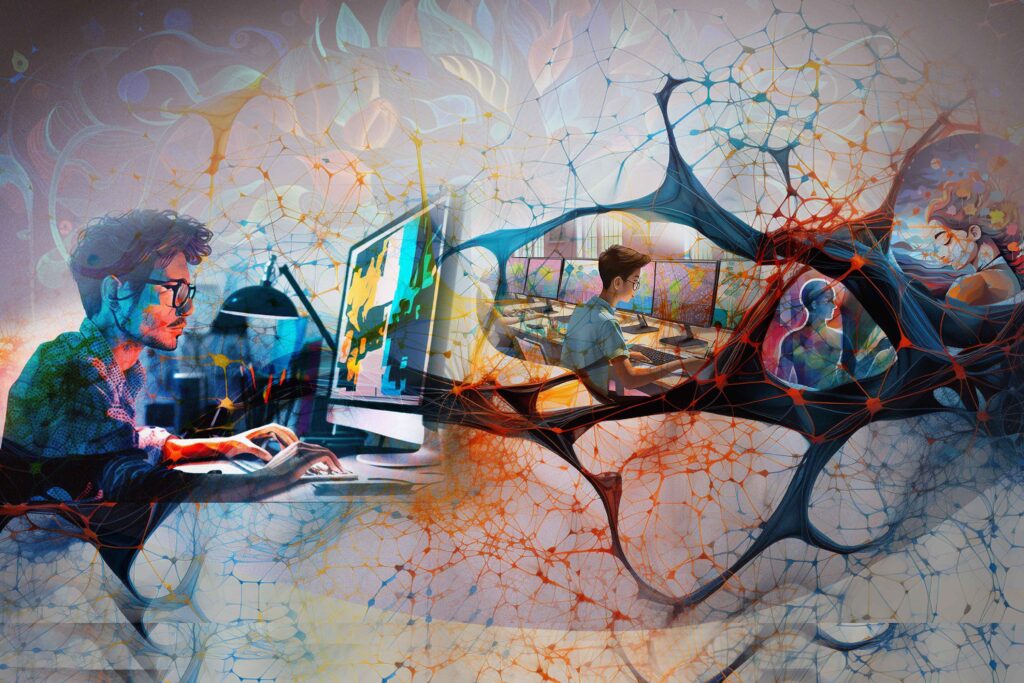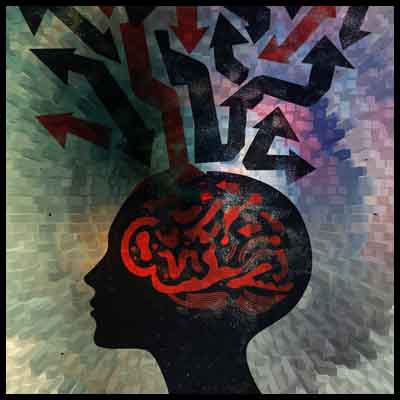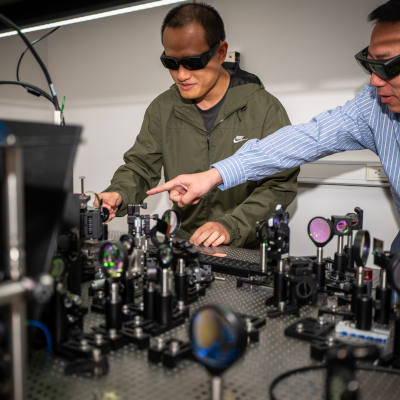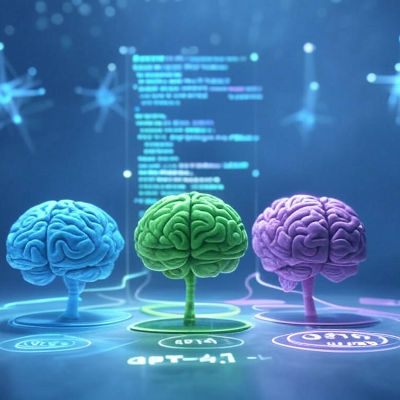‘While These Visions Did Appear’: The Use of AI in Art Therapy
Jan. 28, 2024.
4 mins. read.
12 Interactions
From overcoming trauma to unleashing creativity, unlock the therapeutic power of art with AI.
That art has therapeutic benefits is intuitive knowledge for us humans. Art’s been our way since time immemorial of accessing the core of our complex feelings – and communicating it if we so choose.
Art therapy is a well-known, long-standing field for helping people find peace, settle anxiety, and overcome trauma. Before generative AI was even a twinkle in the eye of ML scientists, community groups and individual therapists were using art as a way of helping people come to terms with the difficult aspects of their own soul and find peace. It works. It works really well.
But art is difficult to produce. As T.S Eliot says, “between the conception and creation, between the emotion and response, falls the shadow”. The shadow of inability, perhaps. The frustration at the divide between the imagined and the constructed. A gap that fuels self-doubt, a chasm that dissuades action.
Art therapy can also be of limited use to those with disabilities, cognitive impairments, issues with physical aptitude and coordination, or those who simply don’t have an ‘eye’ for it. For those people, the wonders of art therapy can feel out of reach, or even be completely closed off.
A self-conscious understanding of one’s lack of talent, and inability to get what’s in their head onto the page, is hardly therapeutic. On the contrary, it can feel damning. This is where generative AI could have a spectacular role in opening up the therapeutic benefits of art to millions.
There is enormous benefit to manifesting the visions that are in your head, regardless of the route to the creation of it. Before generative AI was a thing, people worked hard to get better at art just because of how desperate they were to get the visions out in the first place, because they understood the value of the end-product for themselves, not just the process of the creation.
The new wave of image-generating AIs that take text prompts and turn them into images that would take unskilled artists years to learn to create (and skilled artists days or weeks to do), can be a boon to those suffering from mental health issues. Seeing the strange fancies of your imagination consecrated into fully realised artworks is a truly liberating, joyous, and uplifting experience. For some it’s the pleasure of a new toy. For others, it may well save their lives. Especially as conscious awareness of the power of these tools is inducted into the wider world of professional psychology.

At a basic level, AI art can give life to inner visions and allow those who feel creatively stunted to experience the power of manifestation. On a more complex level, AI generative tools could be used to address the specific trauma and difficulties an individual is facing. With the help of trained art therapists, and with the further refinement of the AI techniques, AIs like DALL-E, Midjourney, and Stable Diffusion could and should be used to bring peace to those who suffer.
There is still work to be done at these inchoate stages to make these tools suitable for more complex tasks. Ensuring that output is well-defined and predisposed to heal, not hurt, would be an important start. Loosening sanitisation features in a way that would allow those with PTSD and the victims of serious trauma-inducing crimes to explore their nature is equally important. These complex tools continue to be simplified and made more accessible, and we still need legions of art therapists who know how to best deploy them.
It’s not just serious cases though. The average individual – even creative ones – the idea of finding the time to do art is faintly ridiculous. Alongside working eight hours a day, looking after the children, tidying the house, and other daily tasks that make up adult life, to then find time to explore and connect with their creative side is a quaint idea.
However with AI generative art, people who have let their creative side lapse, and their mental health lapse with it, can find an easy route to commune with the parts of their subconscious they have left in abeyance. And in doing so experience at least in part the obvious benefits we receive from practising creative skills.
For most involved with or interested in generative AI, it’s about upheaval: rewiring economic systems, rewriting social contracts, creating new labour-models that lead – with luck – to better societies. Yet the use of AI in Art Therapy shows that it is not all about disruption and chaos, but also reflection and peace. AI art gives each man the chance to talk to his own personal genius through a robo-muse: to tell the stories he has always wanted to tell, to, in the words of Dalí, “see the most inaccessible regions of the seen and the never seen… to imagine in order to pierce through walls and cause all the planetary Baghdads of his dreams to rise from the dust”.
Let us know your thoughts! Sign up for a Mindplex account now, join our Telegram, or follow us on Twitter.


.png)

.png)


.png)







4 Comments
4 thoughts on “‘While These Visions Did Appear’: The Use of AI in Art Therapy”
AI in art therapy offers a powerful new tool for emotional expression and healing through technology!
🟨 😴 😡 ❌ 🤮 💩
Nice topic
🟨 😴 😡 ❌ 🤮 💩
Good Article
🟨 😴 😡 ❌ 🤮 💩
very good article
🟨 😴 😡 ❌ 🤮 💩